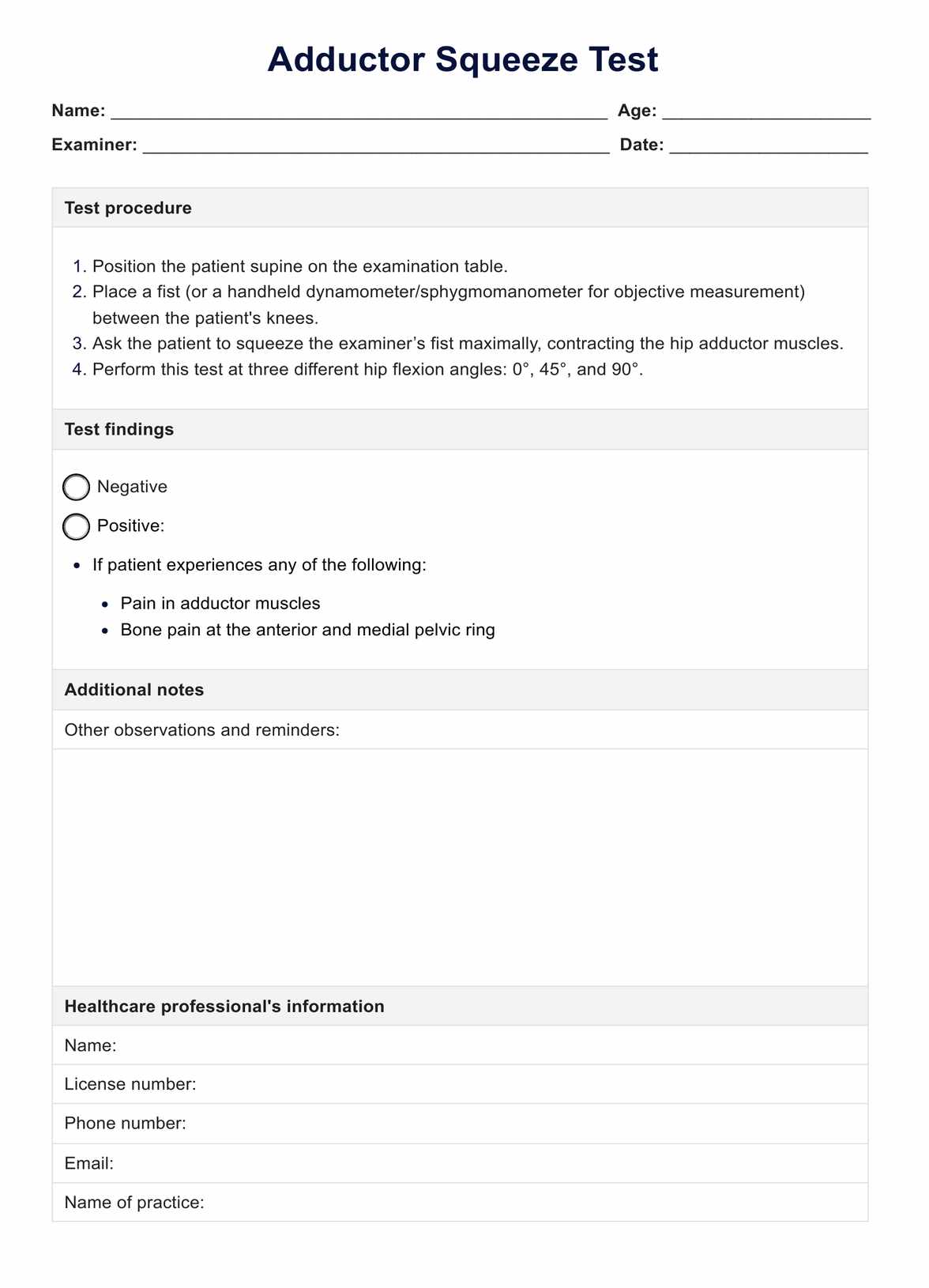The Adductor Squeeze Test is used to assess the strength and integrity of the adductor muscles in the thigh, helping to identify muscle weakness, pain, or groin injury that could indicate underlying issues.

Adductor Squeeze Test
Explore the Adductor Squeeze Test with our detailed guide. Assess adductor muscle strength effectively and discover the benefits of using our template.
Use Template
Adductor Squeeze Test Template
Commonly asked questions
Adductor tightness is often tested through specific stretches or movements that extend the leg away from the body's midline, observing for any restriction or discomfort in the inner thigh.
To test adductor squeeze with a dynamometer, place the device between the patient's knees and ask them to squeeze it while measuring the force applied, which indicates the strength of the adductor muscles.
EHR and practice management software
Get started for free
*No credit card required
Free
$0/usd
Unlimited clients
Telehealth
1GB of storage
Client portal text
Automated billing and online payments











